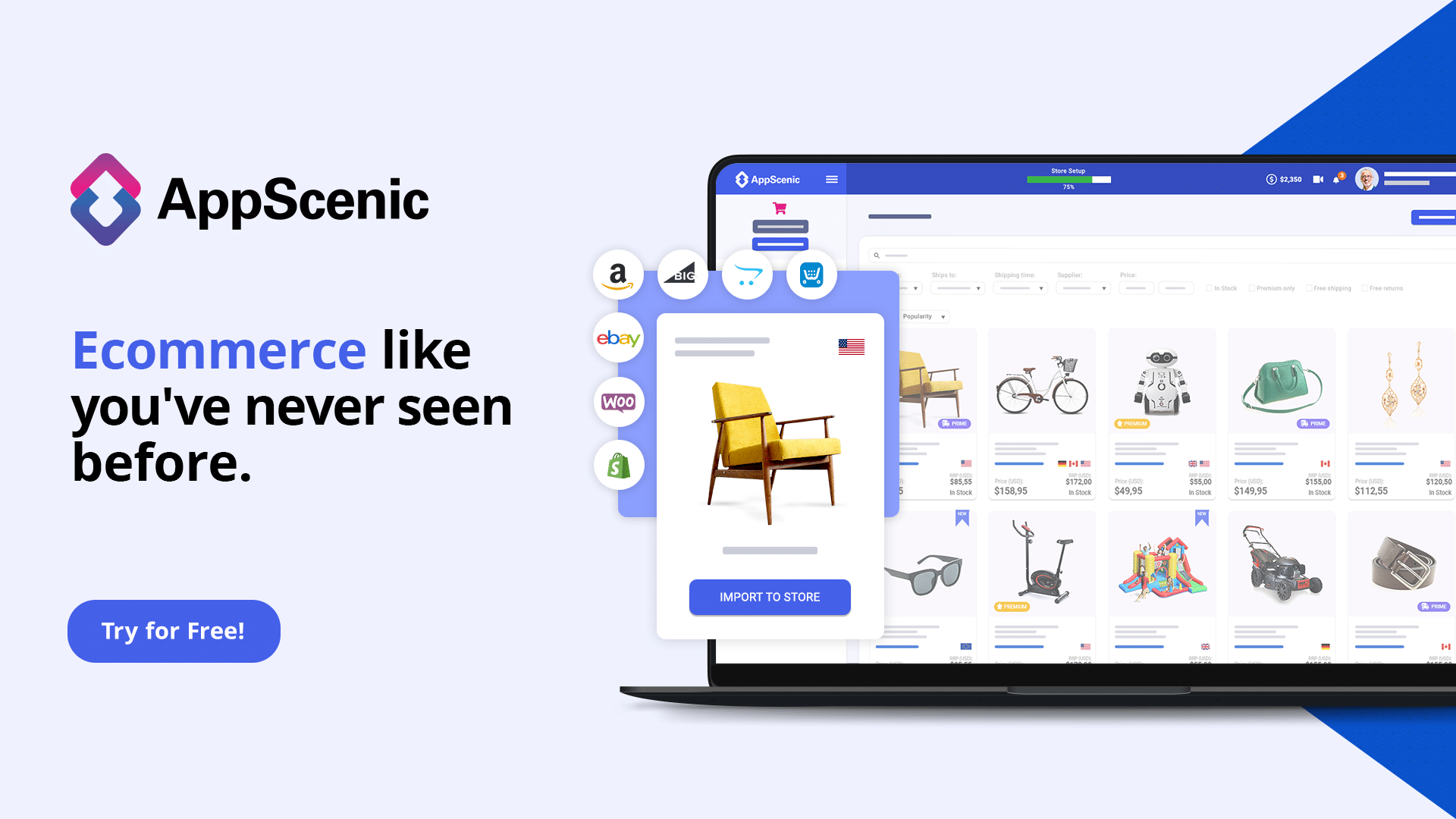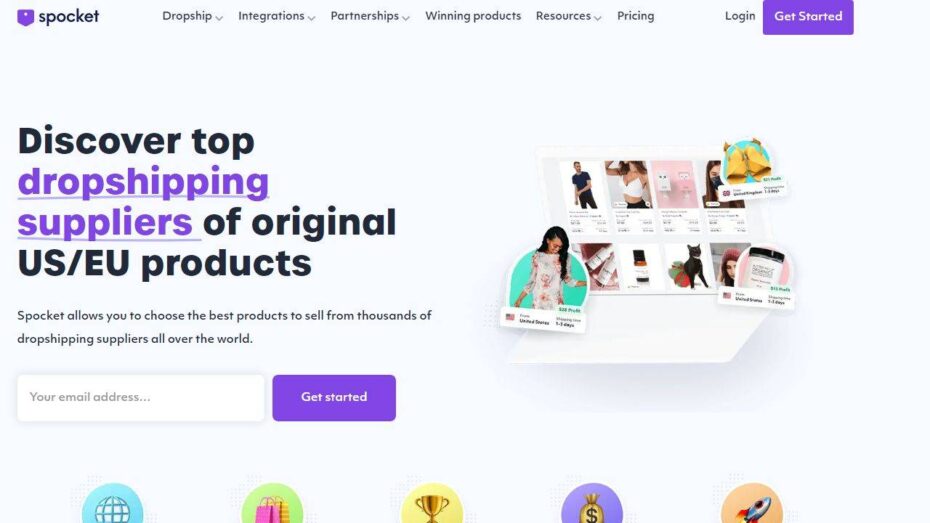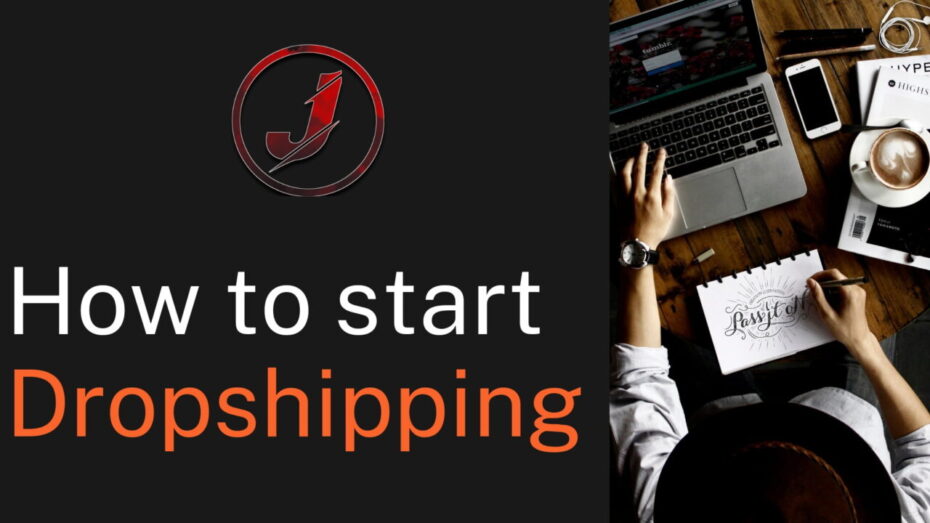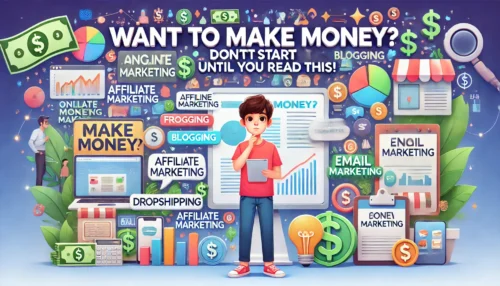Are you wondering how to start dropshipping and why it might be the perfect online business for you? Dropshipping is a business model where you sell products to your customers without holding inventory yourself.
This means less overhead and easier scalability compared to traditional retail models. From my perspective, dropshipping offers unparalleled flexibility and accessibility, making it an attractive option for aspiring entrepreneurs.
In my experience, dropshipping can be launched with minimal startup costs, allowing you to test different business strategies without significant financial risk. Most importantly, you can operate your business from anywhere in the world, as long as you have an internet connection. This makes dropshipping a highly versatile and adaptable business model that fits into a variety of lifestyles.
Lastly, from a professional viewpoint, understanding the mechanics of dropshipping is crucial for success. My intention is to guide you through the essential steps to get started, ensuring you make informed decisions that maximize profitability and sustainability.
By the end of this section, you’ll have a clear understanding of why dropshipping stands out as a top online business opportunity and how you can leverage its benefits.
Why Dropshipping Could Be the Best Online Business for You
What makes dropshipping stand out compared to other online business models? First and foremost, the startup costs associated with dropshipping are significantly lower than those of traditional retail. You don’t need to invest heavily in inventory, warehousing, or logistics, which I think is a major advantage for newcomers to ecommerce.
Secondly, dropshipping is highly scalable. As your business grows, so can your product range without the need for additional storage or increased upfront investment. This scalability is something I strongly believe to be a key driver behind the popularity of dropshipping among entrepreneurs.
Thirdly, the risk in dropshipping is considerably lower. If certain products do not sell, you are not left with unsold stock taking up space and tying up capital. My recommendation is to use dropshipping as a way to explore different markets and niches with minimal risk.
Fourth, dropshipping allows you to experiment with market trends quickly. I would say that this flexibility can give you a competitive edge, as you can adapt your product offerings in real-time to meet current consumer demands without overcommitting financially.
Understanding the Basics Before You Start Dropshipping
What are the foundational elements you need to understand before launching your dropshipping business? To begin, selecting the right niche and products is crucial, as they determine your target audience and your potential for profit. I recommend conducting thorough market research to identify trends and demands that align with your business goals.
Second, establishing a reliable supply chain is paramount. My suggestion is to partner with reputable suppliers who can ensure product quality and efficient delivery. This relationship is fundamental to your business’s reputation and operational smoothness.
Third, setting up your online store effectively is essential. From my perspective, this includes a user-friendly website design, efficient checkout processes, and strong customer service practices. These elements are crucial for building trust and encouraging repeat business.
Fourth, you must understand the legal and administrative aspects of running a dropshipping business. This includes business registration, understanding tax obligations, and adhering to online business regulations, which are often overlooked by new entrepreneurs.
By focusing on these basics, you’ll be better prepared to start dropshipping and build a successful online business.
Essential Steps to Start Dropshipping Successfully
Did you know that over 27% of online retailers have transitioned to dropshipping as their primary method of order fulfillment? This statistic underscores the growing popularity of dropshipping as a business model, driven by its low overhead and scalability. To start dropshipping successfully, there are a few crucial steps you must consider. Here’s how you can start building a strong foundation for your dropshipping business.
The first step is to conduct comprehensive market research. I recommend identifying niches with high demand but low competition, which can give you a competitive edge. Analyzing current market trends and customer preferences helps in selecting products that are likely to sell well, ensuring a profitable start to your dropshipping journey.
Next, you must create a compelling online presence. From my perspective, a user-friendly website and strong social media engagement are key to attracting and retaining customers. Ensuring your online store is optimized for search engines and mobile devices can significantly enhance visibility and drive traffic.
Finally, developing a robust business plan is essential. This should include strategies for scaling your business, managing finances, and dealing with customer inquiries and returns. A clear, well-thought-out business plan can guide you through the complexities of online retail and help you avoid common pitfalls.
Choosing the Right Products to Sell Online
Selecting the right products is the cornerstone of a successful dropshipping business. My advice is to start with products that you are passionate about because this will keep you motivated and more connected to your customer base. Also, products with higher markups can offer better profit margins, which is crucial for the sustainability of your business.
Understanding your target audience is critical. From my experience, knowing customer needs, preferences, and buying behavior helps in tailoring your product offerings to meet their demands. This alignment not only increases sales but also builds customer loyalty.
Another key aspect is staying updated with trends. I strongly believe that by keeping track of emerging trends and evolving consumer interests, you can adjust your product offerings dynamically. This proactive approach keeps your business relevant and competitive in a fast-paced market.
Also, consider the logistical aspects of the products you choose. Items that are small, lightweight, and easy to ship tend to reduce shipping costs and complications. This can enhance customer satisfaction and reduce operational challenges, making it easier to manage your business efficiently.
Finding Reliable Suppliers for Your Dropshipping Business
A reliable supplier is integral to the success of your dropshipping business. My recommendation is to start by vetting potential suppliers carefully. Look for those with positive reviews and a proven track record. It’s crucial that they can provide high-quality products and reliable shipping times.
Building a strong relationship with your suppliers can be beneficial. I suggest regular communication and visits, if possible, to ensure that they understand your business goals and customer expectations. This partnership is vital for maintaining product quality and ensuring that your customers are satisfied.
It’s also important to have backup suppliers. I believe that diversifying your supplier base can protect your business from unexpected disruptions, such as stock shortages or shipping delays. This strategic approach ensures continuity and reliability in your product offerings.
Lastly, negotiate terms that benefit both parties. From my point of view, securing favorable terms can reduce costs and improve your business’s profitability. Don’t hesitate to negotiate prices, minimum order quantities, and shipping options to better align with your business model and financial goals.
Dropshipping Sites Recommendations
 Appscenic
|  Spocket
|
Setting Up Your Dropshipping Store: A Beginner’s Guide
“The first step towards getting somewhere is to decide that you are not going to stay where you are.” — J.P. Morgan This quote perfectly captures the essence of starting your dropshipping business. Setting up your online store is your first real step into the entrepreneurial world. To start dropshipping, you need a clear, actionable plan for establishing your online presence.
The initial phase involves choosing the right platform for your store. I recommend platforms that are user-friendly and specifically cater to dropshippers. These platforms should offer seamless integration with suppliers and an easy setup process to get you started quickly.
Next, focus on the visual and functional aspects of your website. A clean, attractive design that aligns with your brand can significantly impact how customers perceive your store. It’s important that your site not only looks good but also operates smoothly, with fast loading times and easy navigation to enhance the shopping experience.
Lastly, consider the scalability of your platform. As your business grows, you will need more features, better handling of increased traffic, and possibly, more sophisticated marketing tools. Choosing a platform that can grow with your business is crucial. It’s worth investing in a platform that can handle higher volumes of sales and traffic without compromising performance.
Selecting the Ideal Platform for Your Online Store
“Choosing the right platform is like choosing the right partner for your business.” This decision can significantly influence your operational efficiency and customer satisfaction. From my perspective, the ideal platform for your dropshipping business should offer robust integration options with suppliers and marketplaces, which simplifies the process of listing products and fulfilling orders.
When selecting a platform, consider the ease of use. I believe that a user-friendly interface is essential, especially if you’re not technically inclined. Platforms like Shopify, WooCommerce, and BigCommerce offer intuitive dashboards and straightforward setup processes that help you get your store up and running quickly.
Security is another critical factor. I strongly believe that a secure platform not only protects your business data but also builds trust with your customers. Ensure the platform complies with data protection regulations and offers secure payment gateways.
Moreover, look for platforms that offer excellent customer support. From my experience, having access to reliable support can make a huge difference, especially during the initial stages of setting up your store. Quick assistance for troubleshooting and expert advice can help you avoid common pitfalls and improve your store’s functionality.
Design Tips to Enhance User Experience on Your Site
“Good design is good business.” — Thomas Watson Jr. In the world of ecommerce, this couldn’t be more true. An effective website design can not only attract customers but also keep them engaged. To start, ensure your website is mobile-responsive. With the increasing use of smartphones for shopping, your store must look good and function well on all devices.
Secondly, prioritize simplicity in your design. A clean layout with intuitive navigation and minimalistic elements can help customers find what they need without confusion. This approach reduces bounce rates and increases the likelihood of conversions.
Furthermore, optimize your website’s speed. A fast-loading site improves user experience and boosts SEO rankings. Tools like Google PageSpeed Insights can provide insights and recommendations to enhance your site’s performance.
Lastly, incorporate clear calls to action (CTAs). From my point of view, effective CTAs guide customers through your website, enhancing their shopping experience and increasing the chance of a sale. Position these strategically and use persuasive language to encourage customers to take action, whether it’s making a purchase or signing up for a newsletter.
Mastering the Art of Online Sales and Marketing
Just as a skilled painter needs both vision and technique, effective online sales and marketing require a blend of creativity and strategic execution. To start dropshipping and see real success, mastering this blend is essential. Your ability to market your products effectively is as crucial as the quality of the products you offer.
Firstly, understanding your audience is fundamental. I believe that creating buyer personas can help you tailor your marketing efforts to meet the specific needs and preferences of your target customers. This approach ensures your marketing messages are relevant and compelling, increasing engagement and conversion rates.
Secondly, leveraging social media platforms is a must in today’s digital world. Platforms like Facebook, Instagram, and Pinterest offer powerful tools for targeting and retargeting potential customers. From my experience, regular, engaging posts coupled with well-targeted ads can significantly increase your brand’s visibility and attract more traffic to your store.
Lastly, email marketing remains a highly effective tool for online sales. By building a mailing list and crafting personalized email campaigns, you can create a direct line of communication with your customers. My advice is to use this channel to inform customers about new products, special offers, and other updates, which can help boost repeat business and customer loyalty.
Effective Marketing Strategies to Launch Your Dropshipping Business
Launching a dropshipping business is like setting sail on a vast ocean of potential customers and endless opportunities. To navigate this effectively, a well-planned marketing strategy is essential. The first step is to create a strong brand identity. My recommendation is to invest time in developing a brand that resonates with your target market, as this can differentiate you from competitors.
Content marketing is another key strategy. I strongly believe that creating valuable and informative content, such as blogs, videos, and infographics, can attract and engage your audience. This not only boosts your SEO efforts but also establishes your brand as an authority in your niche.
Additionally, influencer partnerships can be highly effective. From my point of view, collaborating with influencers who align with your brand can help you reach a larger audience more authentically. Ensure these partnerships are genuine and provide mutual value to maintain credibility with your audience.
Moreover, consider utilizing pay-per-click (PPC) advertising. This method allows you to display ads in strategic places online, and you only pay when someone clicks on your ad. I recommend starting with Google Ads and Facebook Ads, as these platforms offer advanced targeting options that can help maximize your advertising spend.
SEO Tactics to Drive Traffic and Start Dropshipping Successfully
In the digital marketplace, SEO is the wind that propels your ship forward. To start dropshipping successfully, optimizing your website for search engines is crucial. Begin with keyword research.
Identify the terms and phrases that potential customers are using to find products like yours. Integrating these keywords naturally into your content, titles, and meta descriptions can help improve your site’s visibility and organic search rankings.
On-page SEO is another vital element. This includes optimizing product descriptions, images, and other content on your site. My suggestion is to ensure that each page is not only keyword-rich but also provides genuine value to visitors, which can improve engagement and reduce bounce rates.
Technical SEO should not be overlooked. This involves improving the technical aspects of your website to enhance its discoverability by search engines. From my perspective, ensuring your website is mobile-friendly, has fast loading times, and features secure browsing (HTTPS) are key factors that affect your SEO rankings.
Lastly, building backlinks from reputable sites is crucial for boosting your SEO efforts. I am of the view that engaging with bloggers, submitting guest posts, and participating in forums related to your niche can help build your site’s authority and drive more traffic. Remember, quality over quantity is essential when it comes to backlinks to ensure they benefit your SEO strategy.
Scaling Your Business: Tips for Long-Term Success in Dropshipping
Scaling a dropshipping business is not just about increasing sales; it’s about sustainable growth and strategic expansion. To ensure long-term success, it’s crucial to focus on optimizing operations and exploring new opportunities. Here’s how you can start enhancing your dropshipping journey for significant growth.
First, implement automation wherever possible. Automating order processing, inventory management, and customer service can save you a tremendous amount of time and reduce errors. This shift allows you to focus on strategic decisions rather than day-to-day operations, making your business more efficient and scalable.
Second, continuously analyze your sales data and customer feedback. This insight is invaluable as it informs your decisions regarding which products to focus on or discontinue. I recommend using analytics tools that provide detailed reports on customer behavior, product performance, and market trends. This data-driven approach ensures you make informed decisions that contribute to sustained growth.
Lastly, consider diversifying your product offerings. This doesn’t just mean adding new products, but also refining existing ones to better meet customer needs. By expanding your range strategically, you can cater to a broader audience and reduce dependency on a few bestsellers, which is crucial for minimizing risks associated with market fluctuations.
Analyzing Data and Metrics to Optimize Your Sales
“What gets measured gets managed.” Analyzing key data and metrics is critical to optimizing your dropshipping business. Start by tracking the right metrics such as conversion rates, average order value, and customer acquisition costs. These figures can reveal a lot about the health of your business and pinpoint areas for improvement.
Customer segmentation is another effective strategy. By dividing your customers into groups based on their purchasing behavior and preferences, you can tailor your marketing efforts more effectively. This targeted approach can significantly increase conversion rates and customer loyalty. From my perspective, personalized marketing is not just effective; it’s essential in today’s competitive e-commerce landscape.
Furthermore, regularly review your sales channels. I strongly believe that understanding which channels are performing best can help you allocate your resources more efficiently, maximizing ROI. Whether it’s your own e-commerce website, marketplaces, or social media platforms, knowing where your sales are coming from is crucial for strategic planning.
Also, consider implementing A/B testing on various elements of your online store, from product descriptions to checkout processes. This method allows you to make data-backed decisions that can lead to higher conversions and better customer experiences.
Expanding Your Product Line and Exploring New Markets
“Diversity is the engine of invention.” Expanding your product line and entering new markets are key strategies for growth. Initially, research is critical. Before adding new products, conduct thorough market research to understand customer needs and industry trends. I recommend using tools like Google Trends and social media analytics to gauge consumer interest and demand.
Then, assess your supply chain’s capability to handle new products. This includes evaluating whether your current suppliers can meet the new demand or if you need to onboard new ones. From my experience, maintaining a flexible supply chain is vital for accommodating expansion without sacrificing quality or delivery times.
Moreover, exploring new geographic markets can open up additional revenue streams. My advice is to start small—perhaps with countries that have minimal language and cultural barriers. Use market research to adapt your marketing strategies to resonate with these new audiences.
Finally, I suggest leveraging local partnerships and influencers in new markets to boost your brand’s visibility and credibility. Collaborative efforts can lead to more effective market penetration and faster establishment of your brand in unfamiliar territories.
Kickstart Your Journey to Becoming a Dropshipping Success
Embarking on your dropshipping journey is an exciting step towards building a thriving online business. This model offers the flexibility and scalability necessary to create a substantial online presence with minimal risk. Here’s how you can start positioning yourself for success in the competitive world of e-commerce.
Firstly, thorough planning is crucial. My advice is to spend adequate time researching and understanding your niche, target market, and competition. This foundation will guide your product choices, marketing strategies, and business operations, ensuring you are well-prepared to meet consumer demands and market trends.
Secondly, focus on building a strong online presence. Your website is your digital storefront; make it professional and user-friendly. I strongly believe that a well-designed website, coupled with effective SEO practices, can significantly enhance your visibility and attract more customers.
Lastly, never underestimate the power of customer service. In my opinion, providing excellent customer service can set you apart from competitors. It not only helps retain customers but also builds your brand’s reputation through positive reviews and word-of-mouth. Investing in good customer relations is investing in the future of your business.
Recap of Key Steps to Start Dropshipping
To start dropshipping successfully, let’s recap the essential steps covered in this guide. First, selecting the right niche and products that align with your interests and market demand is critical. I suggest using tools like Google Trends and social media insights to identify profitable and trending products.
Next, setting up your online store on a reliable platform is vital. From my perspective, choosing a platform that offers ease of integration with suppliers and a user-friendly interface will facilitate a smoother launch and ongoing operations.
Furthermore, implementing effective marketing and SEO strategies is essential for driving traffic and sales. I recommend starting with content marketing and paid advertising to build initial visibility, then gradually optimizing your SEO to gain organic traffic.
Finally, regularly analyzing your business performance and adapting your strategies based on customer feedback and market changes is crucial. I believe staying agile and responsive to the market will help you sustain and grow your dropshipping business over time.
Encouragement to Take Action and Start Your Online Business
Now is the time to take the leap and start your dropshipping business. If you’ve been waiting for the perfect moment, consider this your sign. The e-commerce landscape is ripe with opportunities for those willing to put in the effort to learn and grow.
I am of the mind that starting a business can seem daunting, but with the right resources and a solid plan, success is within reach. Remember, every big business started somewhere small. I strongly believe that with determination and persistence, you can scale your dropshipping business into a profitable venture.
Lastly, I couldn’t agree more with the notion that the journey of a thousand miles begins with a single step. My final piece of advice is to start small, stay focused, and keep learning. You have the potential to transform your entrepreneurial dreams into reality, so why wait? Start building your dropshipping business today and take control of your financial future.
Frequently Asked Questions (FAQ)
What is dropshipping and how does it work?
Dropshipping is a retail fulfillment method where a store doesn’t keep the products it sells in stock. Instead, when a store sells a product, it purchases the item from a third party and has it shipped directly to the customer. This way, the seller doesn’t have to handle the product directly.
What are the initial costs involved in starting a dropshipping business?
The initial costs can be relatively low compared to traditional retail. Key expenses include creating an online store (domain, hosting, and platform fees), marketing, and possibly some initial software tools for automation and management. Typically, you can start with a budget ranging from $200 to $500.
How do I choose the right niche for my dropshipping business?
To choose the right niche, consider your interests and passions, market demand, competition, and profitability. Use tools like Google Trends, keyword research, and competitor analysis to identify niches with high demand and low competition.
Where can I find reliable suppliers for dropshipping?
Which e-commerce platform is best for a dropshipping store?
Popular e-commerce platforms for dropshipping include Shopify, WooCommerce, BigCommerce, and Wix. Shopify is often recommended for its ease of use, integrations with dropshipping apps, and excellent customer support.
How can I drive traffic to my dropshipping store?
To drive traffic, use a combination of SEO, content marketing, social media marketing, paid advertising (like Google Ads and Facebook Ads), and email marketing. Building a strong online presence and engaging with your target audience are crucial.
What are the common challenges faced in dropshipping and how can I overcome them?
Common challenges include finding reliable suppliers, managing customer expectations, handling returns, and competition. To overcome these, establish strong supplier relationships, set clear customer expectations, implement efficient return policies, and continuously analyze and adapt your business strategies.
How do I handle customer service and returns in dropshipping?
For customer service, provide clear communication channels, respond promptly to inquiries, and offer detailed product information. For returns, set a clear return policy in agreement with your suppliers, and handle returns efficiently by coordinating with suppliers for restocking and refunds.
Is dropshipping profitable and how can I maximize profits?
Dropshipping can be profitable with the right strategies. To maximize profits, focus on marketing high-demand products, optimizing your pricing strategy, minimizing operational costs, upselling and cross-selling products, and continuously improving your customer experience.
How can I scale my dropshipping business?
To scale your business, expand your product range, explore new markets, invest in advanced marketing strategies, automate your processes with tools and software, and continuously analyze performance data to make informed decisions. Building a strong brand and loyal customer base will also support long-term growth.






